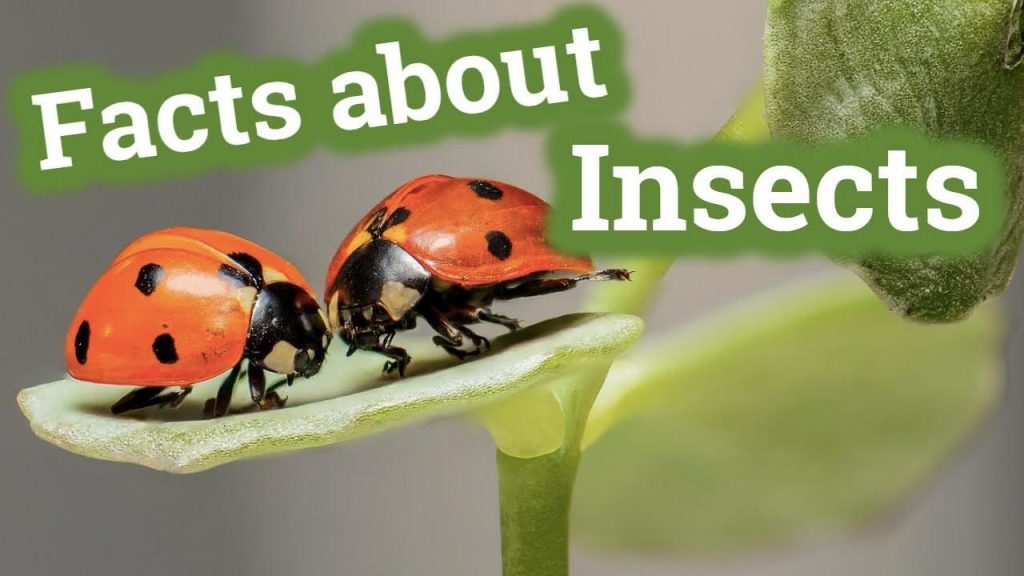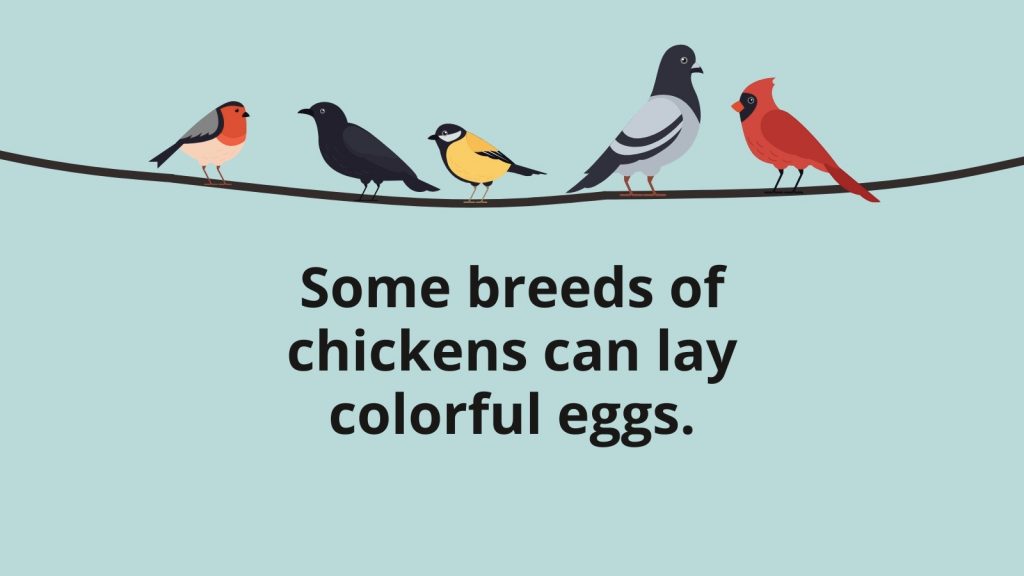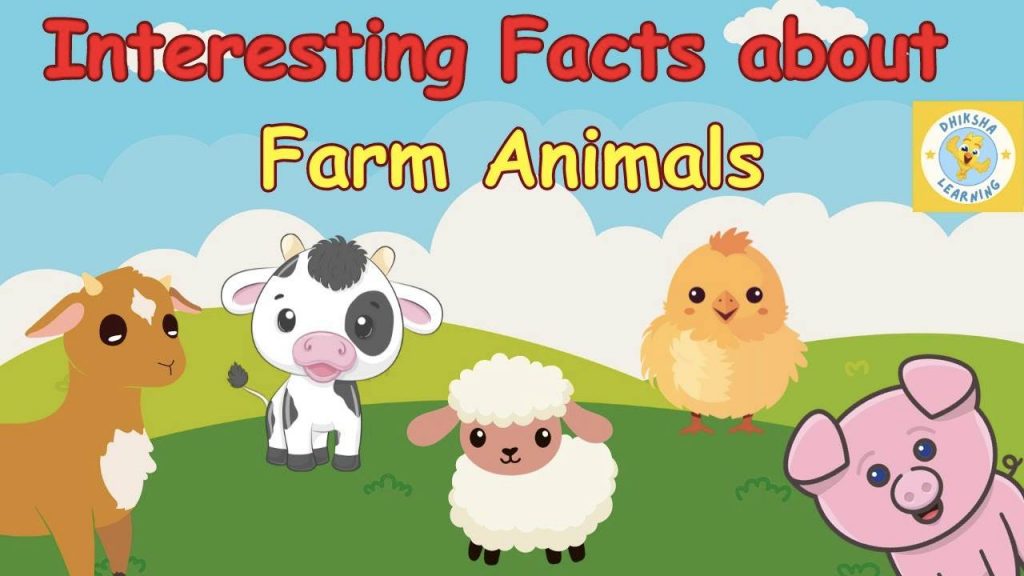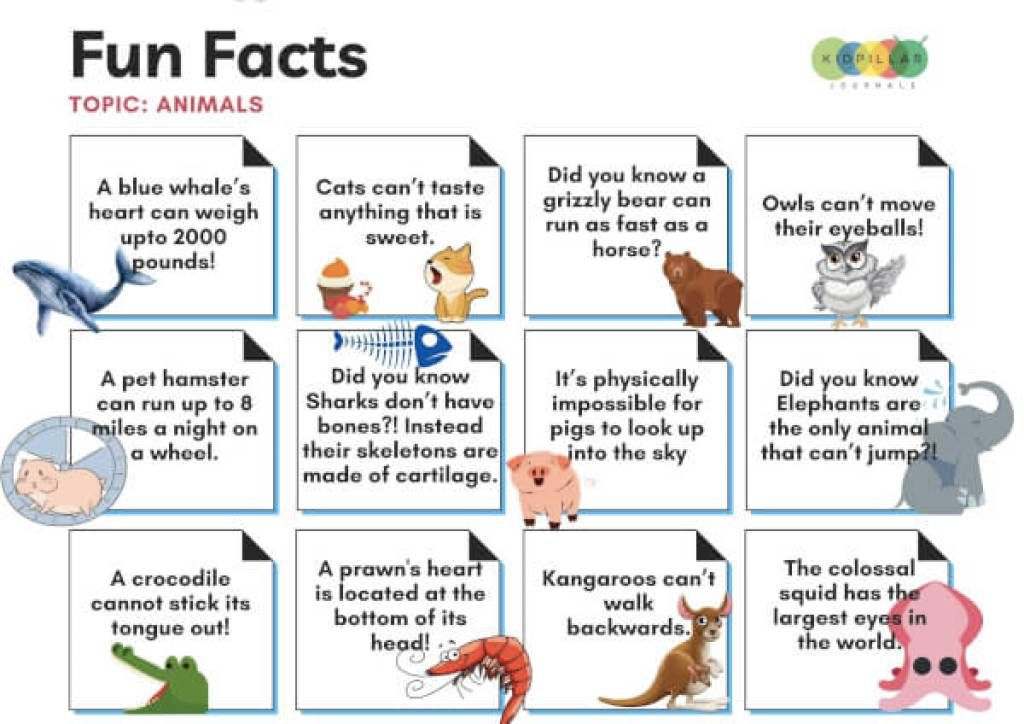Are you looking for a fun way to teach your kids about the animal kingdom? You’ve come to the right place! Our blog is packed with exciting animal facts for kids that are easy to understand and sure to captivate young learners. Let’s dive into the wild and wonderful adventures that await!
Math & ELA | PreK To Grade 5
Kids see fun.
You see real learning outcomes.
Watch your kids fall in love with math & reading through our scientifically designed curriculum.
Parents, try for free Teachers, use for free
60 Fun Facts About Animal
10 Underwater Animal Facts for Kids
If you are looking for fun ways to teach kids about underwater animals, here are some fun activities to get started:
Begin here
- Octopuses have three hearts: Two pump blood through the gills, while the third pumps it through the rest of the body. When an octopus swims, the heart that delivers blood to the rest of the body stops beating, which is why they prefer crawling to swimming.
- Seahorses are the only animals where the male gives birth: One of the most cool facts about animals is that male seahorses are equipped with a pouch on their stomach in which to carry babies—up to 2,000 at a time.
- Jellyfish are mostly water: They are composed of approximately 95% water. When they wash ashore, they can almost disappear as their water content evaporates.
- Starfish can regenerate their arms: In fact, a single arm can regenerate a whole body under the right conditions.
- Sharks are older than trees: Sharks have existed for around 400 million years, while the first trees appeared around 350 million years ago.
- Dolphins have names for each other: They use a unique whistle, referred to as a “signature whistle,” to identify and call each other.
- Mantis shrimp can throw the fastest punch in the natural world: Their claws can accelerate as quickly as a .22 caliber bullet, and they use this speed to crack open the shells of prey.
- Moray eels have a second set of jaws: They have an extra set of jaws in their throat called pharyngeal jaws, which they use to pull prey down their throats.
- The immortal jellyfish can theoretically live forever: The Turritopsis dohrnii species of jellyfish is capable of reverting back to its juvenile form after reaching adulthood, a process which can theoretically go on indefinitely.
- Clownfish can change gender: Clownfish are all born male, and the dominant male of a group can change into a female if the dominant female dies.
10 Reptiles Facts for Kids
Explore fun reptile games that teach kids about their habitat, behavior and unique adaptation:
Begin here
- Chameleons can change their skin color: This change isn’t just for camouflage; it also reflects their mood, temperature, and exposure to light. The color change is due to the shifting of tiny crystals in their skin that affect how light reflects off them.
- The Komodo dragon has venomous bites: Originally thought to kill with bacteria-rich saliva, researchers have discovered that Komodo dragons have venom glands that help them subdue prey.
- Sea turtles can return to the exact beach where they were born to lay their eggs: This phenomenon, known as natal homing, involves complex navigational skills that are still not fully understood.
- Crocodiles have the strongest bite of any animal in the world: Their jaw muscles are capable of exerting immense force, essential for their role as apex predators in their ecosystems.
- The tuatara, a reptile from New Zealand, has a third “eye” on its forehead: This parietal eye is more primitive and isn’t used for seeing images but is thought to help regulate body temperature and the circadian rhythm.
- Snakes smell with their tongues: By flicking their tongues in the air, they collect scent particles that are then analyzed by an organ in the roof of their mouth called the Jacobson’s organ.
- Some lizards can detach their tails to escape predators: This defense mechanism, known as autotomy, allows the tail to continue wiggling to distract the predator while the lizard escapes.
- Many reptiles are ectothermic: Commonly known as being cold-blooded, they rely on external heat sources to regulate their body temperature.
- The Galápagos marine iguana is the only lizard that can swim and forage in the ocean: It has adapted to its environment by developing the ability to expel salt from its nostrils and a flattened tail to aid in swimming.
- Pythons can sense heat to locate their prey: They have infrared-sensitive receptors in pits along their lips, allowing them to “see” the heat emitted by their prey, which is particularly useful for hunting in the dark.
10 Insect Facts for Kids

- Ants can lift up to 50 times their own body weight: Depending on the species, some ants can even carry up to 100 times their weight, making them among the strongest creatures relative to size.
- Bees can recognize human faces: In experiments, bees have been shown to recognize and differentiate between different human faces, a trait that is thought to help them in identifying different flowers.
- Dragonflies have extraordinary flight capabilities: They can fly straight up and down, hover like a helicopter, and even mate mid-air. Their flight efficiency makes them one of the best hunters in the insect world.
- Butterflies taste with their feet: Their taste sensors are located on their feet, and they can taste it just by standing on their food source.
- Fireflies are not flies but beetles: Known for their glowing abdomens, this bioluminescence is actually used for attracting mates and communication.
- Termites have queens that can live up to 50 years: Some termite queens may lay millions of eggs over their lifetime, the longest lifespan of any insect.
- Fleas can jump over 100 times their own body height: This makes them one of the best jumpers in the animal kingdom, relative to body size.
- The praying mantis can rotate its head 180 degrees: This allows it to scan its surroundings with two large compound eyes for prey and threats.
- Some species of ants build living bridges with their bodies: When faced with gaps or obstacles, army ants often form bridges by linking their bodies, allowing other ants to pass over.
- The dung beetle can navigate using the Milky Way: They are one of the few known non-human species to navigate by the stars, using the Milky Way’s band of light to guide their path as they roll their dung balls.
10 Facts About Birds

- Hummingbirds can hover in mid-air: This is due to their incredibly rapid wing flaps, which can be as fast as 80 times per second, allowing them to hover and even fly backward.
- Penguins can drink salt water: They have a gland near their eyes that filters salt from their bloodstream, which they then excrete through their beaks.
- The albatross can glide for hours without flapping: These birds have a wingspan that can reach up to 11 feet (3.4 meters), enabling them to glide over the ocean for hours, even days, without needing to flap their wings.
- Ostriches have the largest eyes of any land animal: Each eye can be up to 2 inches (5 cm) in diameter, larger than its brain, providing excellent vision.
- Parrots can mimic human speech and other sounds: They do this by controlling the muscles in their throat to alter the flow of air across their syrinx, the bird equivalent of a human larynx.
- The Bee Hummingbird is the smallest bird in the world: Found in Cuba, this bird weighs less than a penny and is about 2 inches (5 cm) long.
- Crows are incredibly intelligent: They are known to use tools, solve complex problems, and even hold grudges against specific humans.
- The Hoatzin bird is born with claws on its wings: Juvenile hoatzins use these claws to climb trees until their wings are strong enough for flight.
- Flamingos are born with gray feathers: They obtain their pink color from carotenoid pigments found in the algae and crustaceans that they eat.
- Bald Eagles build the largest tree nests of any bird species: Their nests can be up to 8 feet (2.4 meters) wide and weigh as much as a ton.
10 Farm Animal Facts for Kids

- Cows have best friends: Cows become stressed when separated from their best friends. This indicates a complex social structure among cattle.
- Chickens are excellent communicators: Chickens have over 30 distinct vocalizations that they use to communicate with each other, each with a specific meaning, including alerting others to the presence of food or predators.
- Pigs are smarter than dogs: Pigs are considered to be one of the most intelligent domestic animals, often ranking higher than dogs and even some primates in intelligence tests. They are capable of solving puzzles and learning tricks.
- Sheep can recognize faces: Sheep have the ability to remember and recognize up to 50 other sheep faces, and they can remember them for years. They can also recognize human faces.
- Goats have accents: Goats can develop different “accents” based on their social surroundings. Their bleats can change as they grow up with different groups.
- Horses can sleep both lying down and standing up: Horses have a special locking mechanism in their legs that allows them to sleep standing up without falling over, but they also lie down for REM sleep.
- Ducks have waterproof feathers: Ducks produce oil in a gland near their tails which they spread over their feathers to make them waterproof. This is crucial for their buoyancy and insulation.
- Turkeys can blush: When turkeys are excited, angry, or ill, the skin on their heads and necks can change color from red to blue to white, reflecting their emotional state or health.
- Rabbits have a 360-degree vision: Rabbits’ eyes are on the sides of their head, granting them nearly 360-degree vision, allowing them to see predators from all directions except right behind them.
- Llamas were once used as ‘lawnmowers’ at solar farms: In some modern applications, llamas are used in solar farms to manage vegetation without risking damage to the solar panels, effectively serving as eco-friendly “lawnmowers.”
10 Wild Animal Facts for Kids

- Elephants can recognize themselves in mirrors: Elephants are among the few animals that can pass the mirror test, a sign of self-awareness, which they demonstrate by using mirrors to inspect themselves.
- Cheetahs are the fastest land animals: They can run at speeds of up to 60 to 70 mph (97 to 113 km/h) in short bursts covering distances up to 1,500 feet (460 meters), and they can accelerate from 0 to 60 mph in just a few seconds.
- Giraffes have the same number of vertebrae in their necks as humans: Despite their long necks, giraffes have only seven vertebrae, the same number as humans, but each one is much larger.
- A group of zebras is called a dazzle: The stripes of a zebra may serve to confuse predators and biting insects, or to control body heat. When they stand together, their patterns merge, potentially confusing predators.
- Polar bears have black skin: Under their thick, white fur, polar bears have black skin, which helps them absorb heat from the sun to stay warm in their cold habitats.
- Kangaroos can’t walk backwards: Their muscular tails and the structure of their bodies prevent them from moving backwards.
- Wolves have unique howls that can be used to identify them: Like human fingerprints, each wolf’s howl is distinctive and can be used by researchers to identify individuals.
- Owls don’t have eyeballs: They have eye tubes that provide better depth perception and allow them to see prey from great distances. Their eyes don’t move in their sockets, so they must turn their heads to see around.
- The lyrebird can mimic almost any sound it hears, including chainsaws, car alarms, camera shutters, and the calls of other birds. This capability makes it one of the most skilled vocal mimics in the animal kingdom.
- Sloths take up to a week to digest their food: Due to their slow metabolism, sloths have an incredibly slow digestion rate, which is necessary for their low-energy lifestyle in the treetops.
Related Reading: Best Animal Crafts for Kids to Unleash Their Creativity
Conclusion
We hope you and your little explorers enjoyed discovering these interesting animal facts! Whether flipping through sea animal facts or trekking through the wilds of the jungle, every page you turn adds a little more wonder to your child’s world.
Related Reading: Best Animal Trivia Questions for Kids
Frequently Asked Questions (FAQs)
What is the strangest animal fact?
One of the strangest and fascinating piece of animal fun facts is that the immortal jellyfish (Turritopsis dohrnii) can theoretically live forever. It can bypass death by reverting to its juvenile form after reaching adulthood, making it one of the most unique creatures in the animal kingdom.
What animal lives the longest?
The animal known to live the longest is the Greenland shark, which can live for around 400 years. These deep-sea dwellers grow very slowly and reach maturity at about 150 years old, making them the longest-living vertebrates known on Earth.
Which animal can live up to 1000 years?
The ocean quahog clam (Arctica islandica) is believed to be able to live for up to 500 years, making it one of the longest-lived animal species. While no known animal routinely reaches 1000 years, this clam comes closest, with one individual, nicknamed “Ming,” estimated to have lived for 507 years.
































